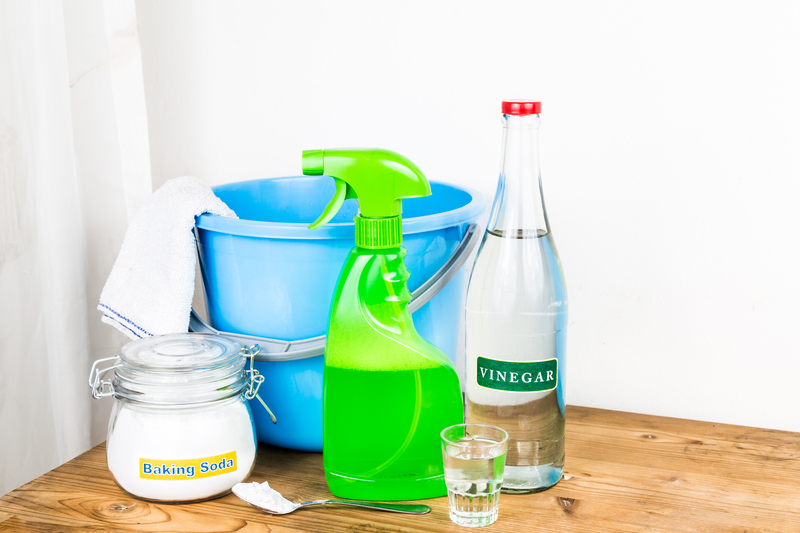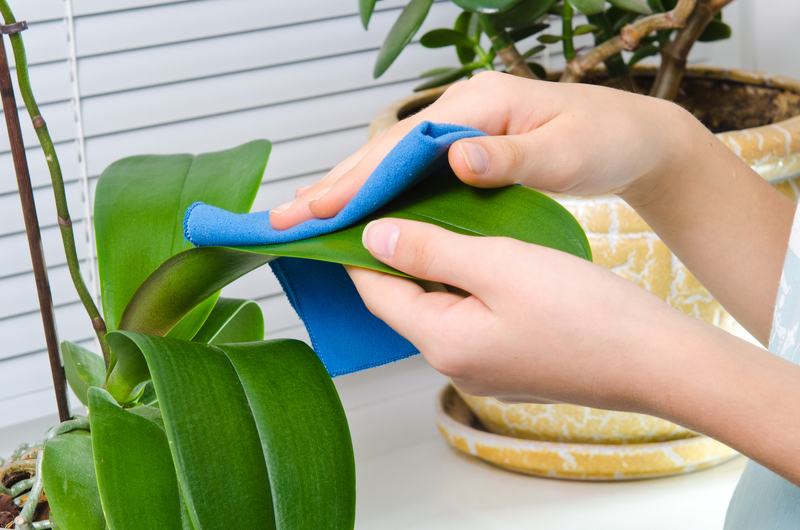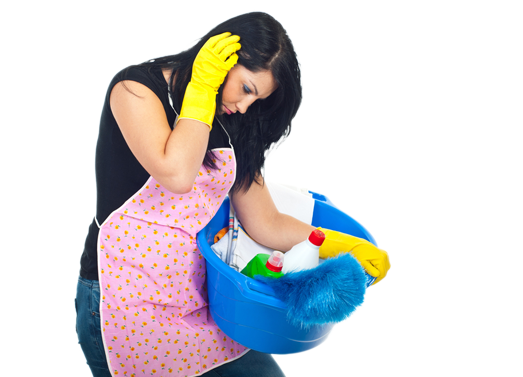Easy Hacks for a Spotless Burnt Stovetop Cleanup
Posted on 22/05/2025
Easy Hacks for a Spotless Burnt Stovetop Cleanup
A sparkling stovetop not only enhances your kitchen's appeal, but also ensures safe and efficient cooking. Yet, even the most meticulous home cooks sometimes face the challenge of a burnt stovetop. Splatters of oil, stubborn sauce spills, and those surprise boil-overs can quickly transform your pristine appliance into a gritty, tough-to-clean surface. If you're looking for easy hacks for a spotless burnt stovetop cleanup, you've come to the right place!
Why Does My Stovetop Get Burnt?
Before diving into quick cleaning hacks for your burnt stovetop, it's important to understand the usual culprits. Busy schedules, multitasking in the kitchen, and high temperatures can lead to accidental spills and scalding. Over time, this grime carbonizes, forming burnt residue that's tricky to eliminate.
- Cooking mishaps: Boil-overs and overflows happen to the best of us.
- Grease splatters: Frying and sauteing can leave persistent, greasy spots.
- Neglect: Ignoring spills gives them time to harden and burn onto the stovetop.
Let's look at simple, effective, and quick stovetop cleaning solutions to remove burnt-on food and restore shine.

Prepping for Burnt Stovetop Cleaning
Safety first: Always make sure your stovetop is switched off and completely cool before starting any cleaning. Remove any grates, knobs, and burner caps so you can reach every nook and cranny.
Tools You'll Need
- Soft sponge or scrub pad (non-abrasive)
- Microfiber cloth or paper towels
- Baking soda
- White vinegar
- Lemon juice (optional for fragrance and boost)
- Plastic scraper or old credit card
- Dish liquid or mild soap
- Spray bottle
- Gloves (if you have sensitive skin)
Step-by-Step Easy Hacks for Burnt Stovetop Cleanup
1. Wipe Down Loose Debris
Begin your burnt stovetop cleanup by gently removing any loose crumbs, burnt food, or charred bits with a dry towel or hand brush. This makes the deep cleaning more effective and prevents further scratches.
2. Soften the Stubborn Burnt Spots
Mix equal parts white vinegar and water in a spray bottle. Lightly mist the stubborn, burnt food spots on your stovetop. Allow it to soak for 5-10 minutes. Vinegar's natural acidity helps loosen even the most persistent grime.
- For extra-tough burns, place a damp, soapy cloth on the affected area and let it sit for 20 minutes.
- If you're dealing with extreme build-up, try heating the vinegar solution in a microwave (make sure it's not too hot) and spraying it to intensify the effect.
3. Sprinkle Baking Soda
Sprinkle a generous amount of baking soda directly onto the greasy or burnt patches. Its fine, mildly abrasive texture helps break down stuck-on residue without damaging the surface. This is the core of many spotless burnt stovetop cleaning hacks.
4. Add a Vinegar Boost
Next, spray or drizzle a little more vinegar over the baking soda. The fizzing action means the mix is working to lift away grime. Let this natural cleaner bubble on your stovetop for about 15 minutes--it'll tackle most burnt-on spots with little effort from you.
5. Scrub Gently
Using a damp, non-abrasive sponge or a soft-bristled brush, gently scrub the area in small circular motions. For particularly tough spots, use a plastic scraper or an old credit card to lift off the softened residue. Never use steel wool or harsh scrubbers, which can scratch the finish and worsen future buildups.
6. Rinse and Repeat as Needed
Wipe away the loosened grime and chemical mix with a clean, damp microfiber cloth. For glass stovetops, you may need to repeat the process a couple of times for complete removal.
7. Polish for a Streak-Free Shine
Once all burnt areas are clean, spray a mixture of equal parts vinegar and water as a final rinse. Buff the stovetop dry with a clean cloth to prevent lingering streaks or water spots. For a glossy finish, a drop of olive oil or a gentle glass cleaner can provide a final polish.
Alternative Hacks for a Spotless Stovetop
Using Dish Soap and Warm Water
Sometimes, the job is easier than you think! For recent spills or light burns, apply a thick mixture of dish soap and warm water to the burnt spots. Let it soak for 15 minutes, then wipe away with a soft cloth. This method is gentle enough for daily cleaning.
Harnessing the Power of Lemon
Lemon juice is both a degreaser and a mild bleaching agent. Cut a lemon in half and rub it directly onto the burnt mark, or mix with salt as a gentle scrub. Leave to sit for 5-10 minutes, rinse, and enjoy a fresh fragrance along with a clean stovetop.
Magic of Hydrogen Peroxide and Baking Soda
For tougher stains, particularly on white enamel surfaces, sprinkle baking soda, drizzle hydrogen peroxide (3%) over the area, and allow it to fizz. After 10-15 minutes, gently scrub then wipe away the residue. This is a little-known yet highly effective burnt stovetop cleaning hack.
Commercial Cleaners (Use Carefully!)
If DIY methods aren't cutting it, try a specialized stovetop cleaner. Always follow label directions and patch-test first, especially for glass or ceramic cooktops. Avoid products with bleach or harsh abrasives which might stain or erode surfaces.
Cleaning Specific Stovetop Types
Gas Burners
- Remove grates and burner caps. Soak them in hot, soapy water for 20-30 minutes.
- Scrub with a soft brush, rinse, and dry thoroughly before reassembling.
- Clean under and around the burners with baking soda paste if burnt food persists.
Glass or Ceramic Stovetops
- Use only non-abrasive cleaners and soft cloths to prevent scratches.
- Special stove-top scrapers can remove stubborn residue when used gently at a 45-degree angle.
- Avoid letting anything acidic (like tomato sauce) sit too long as it can etch the surface.
Electric Coil Stovetops
- Unplug or ensure burners are completely cool and off.
- Lift the coils and clean the drip pans with soapy water and a baking soda scrub.
- Wipe the coils themselves with a damp cloth--never submerge them in water.
Pro Tips to Keep Your Stovetop Spotless
Prevention Is Better Than Cure
- Wipe spills immediately: The longer messes stay, the harder they are to remove.
- Deep clean weekly: A regular, light scrub prevents stubborn buildup.
- Use burner liners or protectors: They're a boon for easy future cleanups.
- Avoid cooking at excessively high heat: This reduces the risk of sudden boil-overs and accidental burns.
Best Practices for a Sparkling Stove
- Always let the stove cool before cleaning to avoid burns and injuries.
- Don't mix strong chemical cleaners--stick to one at a time.
- Store a small spray bottle of diluted vinegar in the kitchen for quick cleans after each use.
- Consider a stove-top cover when not in use to prevent dust and spills.

Frequently Asked Questions About Burnt Stovetop Cleaning
Can I use a razor blade to scrape burnt residue?
It's best to avoid razor blades unless your glass stovetop manufacturer explicitly recommends it. If needed, use a dedicated glass cooktop scraper--a special tool designed to remove burnt-on stains gently.
What's the fastest way to clean a fresh burnt spill?
As soon as the surface has cooled, soak the spill with warm soapy water or vinegar for a few minutes, then wipe away. Fresh burns are much easier to remove than set-in stains.
Are there stovetop cleaners specifically for burnt messes?
Yes, there are commercial stovetop cleaners designed for burnt food and spills. Look for mildly abrasive pastes or gels--just be sure they're suitable for your appliance type.
How can I clean burner grates that are heavily burnt?
Soak grates in a baking soda and vinegar bath overnight, then scrub with a stiff brush. For persistent carbon buildup, use a paste of baking soda, dish soap, and hot water.
Conclusion: Keeping Your Burnt Stovetop Spotless
Maintaining a spotless stovetop doesn't have to be a daunting, time-consuming task. With these easy hacks for burnt stovetop cleanup, you can handle even the most stubborn messes using simple pantry items and a little patience. The secret is acting quickly, using the right materials, and establishing a routine that works for you.
Whether your burner is mildly stained or you're facing a major burnt disaster, these practical stovetop cleaning tips will bring back the gleam. Just remember--prevention, regular attention, and occasional deep cleaning are your best friends for a beautiful kitchen. Happy cleaning!
Did you enjoy these stovetop cleaning hacks?
If you found these easy hacks for a spotless burnt stovetop cleanup useful, share this guide with your friends or bookmark it for quick reference. Clean, shine, and cook with confidence!





